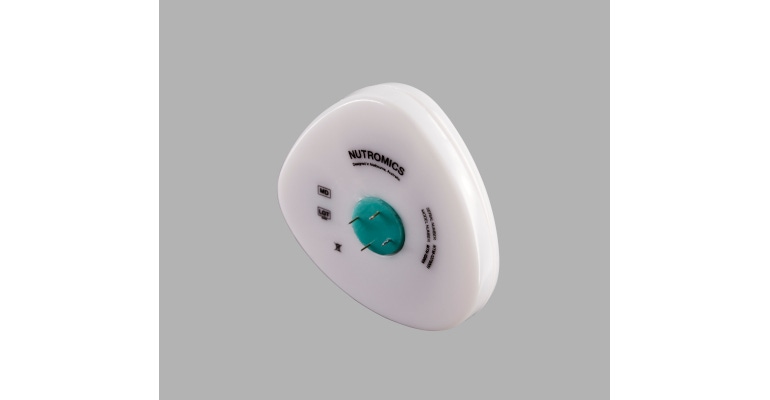Lab on a Patch utilizes microneedles coated with synthetic DNA-based sensors that measure intended targets in interstitial fluid and communicates via Bluetooth with hospital information systems.
May 13, 2023

Using his company’s Lab on a Patch technology, Nutromics CEO Peter Vranes envisions a scenario in which patients can be continuously monitored in real time for any number of diagnostic targets, giving clinicians an invaluable tool for treating them most effectively.
In a perfect world, clinicians would have access to the most up-to-date information about the health of their patients so that they can provide them the most accurate and effective treatments. But in the real world that is not always the case. Measuring levels of a specific target requires blood draws, which are then sent to a lab and can take hours to process. By that time the information could already be obsolete.
However, “when you can measure things continuously in real time, they're the types of problems you can solve in healthcare,” Vranes explained, in an interview with Design News.
Lab on a Patch provides up-to-the-minute information, building off the technology that continuous glucose monitors (CGMs) use to measure targets of interest in a patient’s interstitial fluid.
“We’re the evolution [of CGM technology] because in our universe we can monitor any diagnostic target,” said Vranes. CGMs use enzymatic sensing only, but Lab on a Patch is a platform technology, he said. “We can measure metabolites, proteins, hormones, drugs—we can go into blue ocean territory where no other technology can compete.”
Lab on Patch is currently in clinical trials and the first application of the technology is for monitoring Vancomycin levels in patients, an antibiotic commonly used for conditions such as sepsis. Currently Vancomycin is prescribed to patients based on estimated weight, but since too low levels of Vancomycin are ineffective and too high levels are toxic, an exact measurement is crucial.
“The rate of clearance has a huge bearing on the concentration of Vancomycin in the body and the clinician has little idea about the rate of clearance,” Vranes said. “So, they're taking a punt with this life-threatening bacterial infection that kills 12 million people around the world every year and it moves really quickly. So, time is of the essence here.”
Without real-time information, clinicians have to make the best dosing guess, Vranes said, and because of the limited information, outcomes can be very poor. He claims his research points to thousands of deaths in the United States from Vancomycin-induced acute kidney injury. “Many more, we don’t know the number, die from ineffective dosing. It’s coded that they died from sepsis. In reality the truth is they died because the clinician couldn't get them into the therapeutic zone quickly enough.”
Lab on a Patch is a tiny device that is attached to the patient’s arm. It contains microneedles coated with synthetic DNA-based sensors that measure intended targets in interstitial fluid. When the synthetic DNA strand senses the presence of its target, it changes shape, resulting in a signal change, which the software uses to determine the presence and concentration of the target. It communicates via Bluetooth with hospital information systems.
A unique design feature of the device is that it has no external applicator, but rather gives a known force into the skin to ensure consistent skin penetration. “That’s a real innovation in this industry,” Vranes said. “It’s the first
wearable of its kind that has the new integrated applicator, and it just simplifies the process,” Vranes explained. “You don't need two pieces of kit to make this work. You've got one that that's all there is, you pop it on. Simple,
elegant, it works.”

Since Lab on a Patch can measure a number of different targets at once, Vranes ultimately sees a future that could include a patch for every patient as they move through the hospital and even post discharge. “Because we can multiplex, because we can put high-value diagnostic targets on one patch, we think that we can get that level of ubiquity,” he concluded.
Nutromics will open its Series-A funding round later this year.
About the Author(s)
You May Also Like




